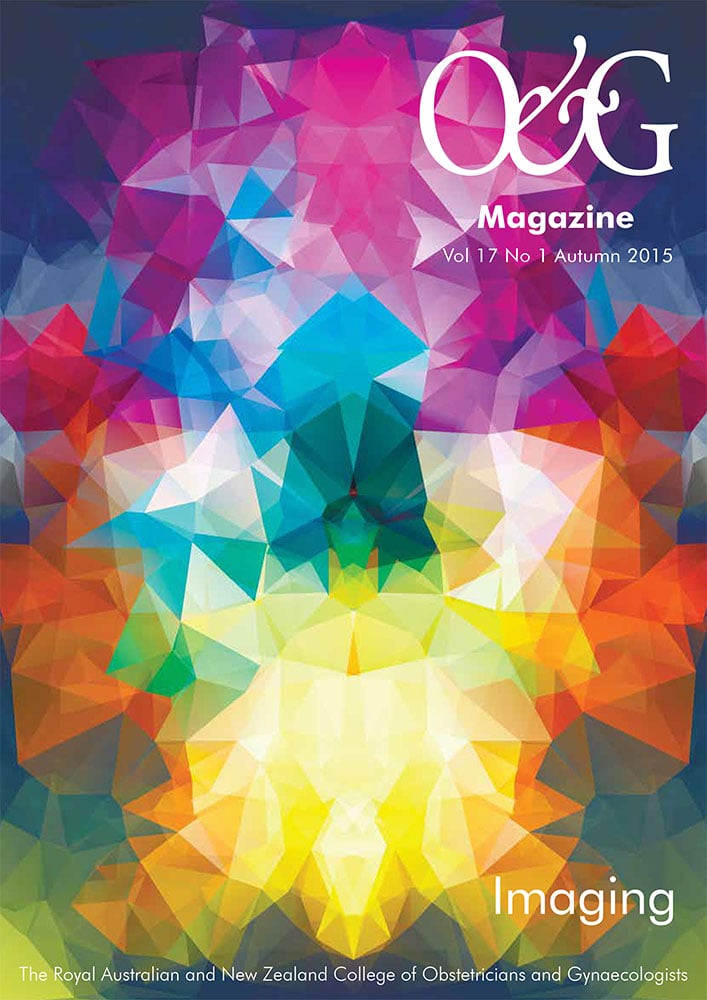Assessing the true scale of one man’s achievement: in memory of Aldo Vacca, 1941–2014.
I never properly met Aldo Vacca, but I knew of him, at the very least, since coming to Australia in 1997. I always thought I would meet him and now it is too late. I have a particular, enduring interest in his work. Aldo is responsible, more than anyone else, for popularising vacuum delivery in Australia and was tireless in his pursuit of this goal, until the end. It is a pity Australians don’t realise how big a difference Aldo’s work has made for women in Australia, and it’s even worse that his great work is slowly being undone, now that his championship is lost to us.
Aldo is very much a part of the history of vacuum delivery, not just in Australia. While the use of vacuum for assisted delivery has a history going back to the 18th century1, the first practicable device was proposed by Malmström in Sweden in 1954. By the 1960s it was popular in Germany2, and by the time I studied in Heidelberg in the 1980s, forceps delivery was very firmly seen as a thing of the past. Progress in the UK was somewhat slower, with JA Chalmers being one of those responsible for change in the 1960s and 1970s.3
Aldo Vacca was the first author of a seminal study, the ‘Portsmouth Operative Delivery Trial’ published in 1983, while he completed his MRCOG training in the UK. The results were quite unequivocal4 and, together with other randomised controlled trials published in the following decade 5, the data were sufficiently clear for (now Sir) Iain Chalmers, then the Head of the National Perinatal Epidemiology Unit in Oxford, to state: ‘The obstetric vacuum extractor is the instrument of first choice for operative vaginal delivery.’6
Chalmers father and son didn’t know how right they were in emphasising that forceps are so much more likely to cause maternal trauma than the vacuum. We have learned quite a bit about this issue over the last ten years, owing to technological advances allowing the non-invasive diagnosis of both anal sphincter and levator ani tears using 4D translabial ultrasound.7 Maternal trauma is much more common than is quoted in textbooks. Anal sphincter trauma is under-diagnosed in the delivery suite, probably by a factor of four8 9 and levator trauma is rarely diagnosed at all, even though it occurs in 15–30 per cent of vaginal deliveries.10
From eight studies to date, we now know that forceps delivery carries an odds ratio of about five for levator trauma compared to vacuum. In our data, the prevalence of avulsion in vacuum is about 13 per cent; after forceps it is 44 per cent. Moreover, this is not just owing to the easier deliveries being done by vacuum, as the forceps rate at my hospital was under two per cent in 2010. This means that Chalmers and Aldo were right to a much greater degree than they were aware of, and Aldo’s achievement is all the more remarkable for it.
In Australia, about two-thirds of all operative vaginal deliveries are done by vacuum, which is largely Aldo’s doing: forceps rates are lowest in Queensland (1.9 per cent), his home state, and highest (excepting the ACT) in Victoria (6.2 per cent), where he arguably had the least influence.11 We have recently modelled the effect of replacing primary vacuum with forceps on the basis of imaging diagnosis of levator avulsion and OASIS in almost 500 primiparous women.12 Such a change in practice would likely increase the prevalence of major permanent trauma by 50 per cent. Conversely, every delivery performed with vacuum rather than forceps reduces the risk of levator and sphincter trauma in primiparous women by about half, from about 80 to just over 40 per cent. Let’s assume Aldo’s achievement is equivalent to the difference in vacuum rates between Queensland and Victoria (about four per cent). Given an average of 250 000 deliveries per year for the last 25 years, or about 6.25 million births, one would expect that about four per cent (or 250 000 women) were affected by a change from forceps to vacuum. Assuming that 1.6 per cent (100 000) rather than 3.2 per cent (200 000) suffered major trauma, Aldo’s legacy is the avoidance of about 100 000 cases of major permanent maternal trauma during these two decades.
Nobody was aware of the magnitude of his achievement when Aldo Vacca was awarded the Medal of the Order of Australia in 2007, or when he received the RANZCOG Distinguished Service Medal in 2011. I doubt there is an obstetrician in all of Australasia, living or deceased, who has had such a beneficial impact on women’s lives, an impact that will last for at least another generation or two. I very much hope that, in our irrational obsession with caesarean section rates, we are not going to undo this legacy in the near future.
References
- Malmström T. The Vacuum Extractor: an Obstetrical Instrument and the Parturiometer: A Tokographic Device. Acta Obstet Gynecol Scand. 1957;36(S3):7-87.
- Krabisch H. The application of and experiences with the Malmstroem vacuum extractor. Zentralbl Gynaekol. 1960;82:673-7.
- Chalmers J. Malmström’s Vacuum Extractor. BMJ. 1969(5672): 720.
- Vacca A, Grant A, Wyatt G, Chalmers I. Portsmouth operative delivery trial: a comparison of vacuum extraction and forceps delivery. BJOG. 1983;90:110-12.
- Johanson R, Rice C, Doyle M, Arthur J, Anyanwu L, Ibrahim J, et al. A randomised prospective study comparing the new vacuum extractor policy with forceps delivery. BJOG. 1993;100:524-30.
- Chalmers J, Chalmers I. The obstetric vacuum extractor is the instrument of first choice for operative vaginal delivery. BJOG. 1989;96:505-9.
- Dietz H. Pelvic Floor Trauma in Childbirth. ANZJOG. 2013;53:220-30.
- Andrews A, Sultan A, Thakar R, Jones P. Occult anal sphincter injuries- myth or reality? BJOG. 2006;113:195-200.
- Guzman Rojas R, Shek K, Langer S, Dietz H. Prevalence of anal sphincter injury in primiparous women. Ultrasound Obstet Gynecol. 2013;42(4):461-6.
- Dietz H. Pelvic Floor Trauma in Childbirth. ANZJOG. 2013;53:220-30.
- Australian Institute of Health and Welfare. Australian Mothers and Babies 2011. Sydney: AIHW, 2013.
- Dietz H, Caudwell-Hall J, Shek K, Langer S. The effect of replacing primary vacuum delivery with forceps. Ultrasound Obstet Gynecol. 2014;44(S1):95.






I was wondering if you could tell me Where Dr. Vacca was born, I’ve been searching for him since our childhood, my name is Marcos Josa and my e-mail address is [email protected], Thank you.
best ask Aldo’s wife Janet Vacca on [email protected]